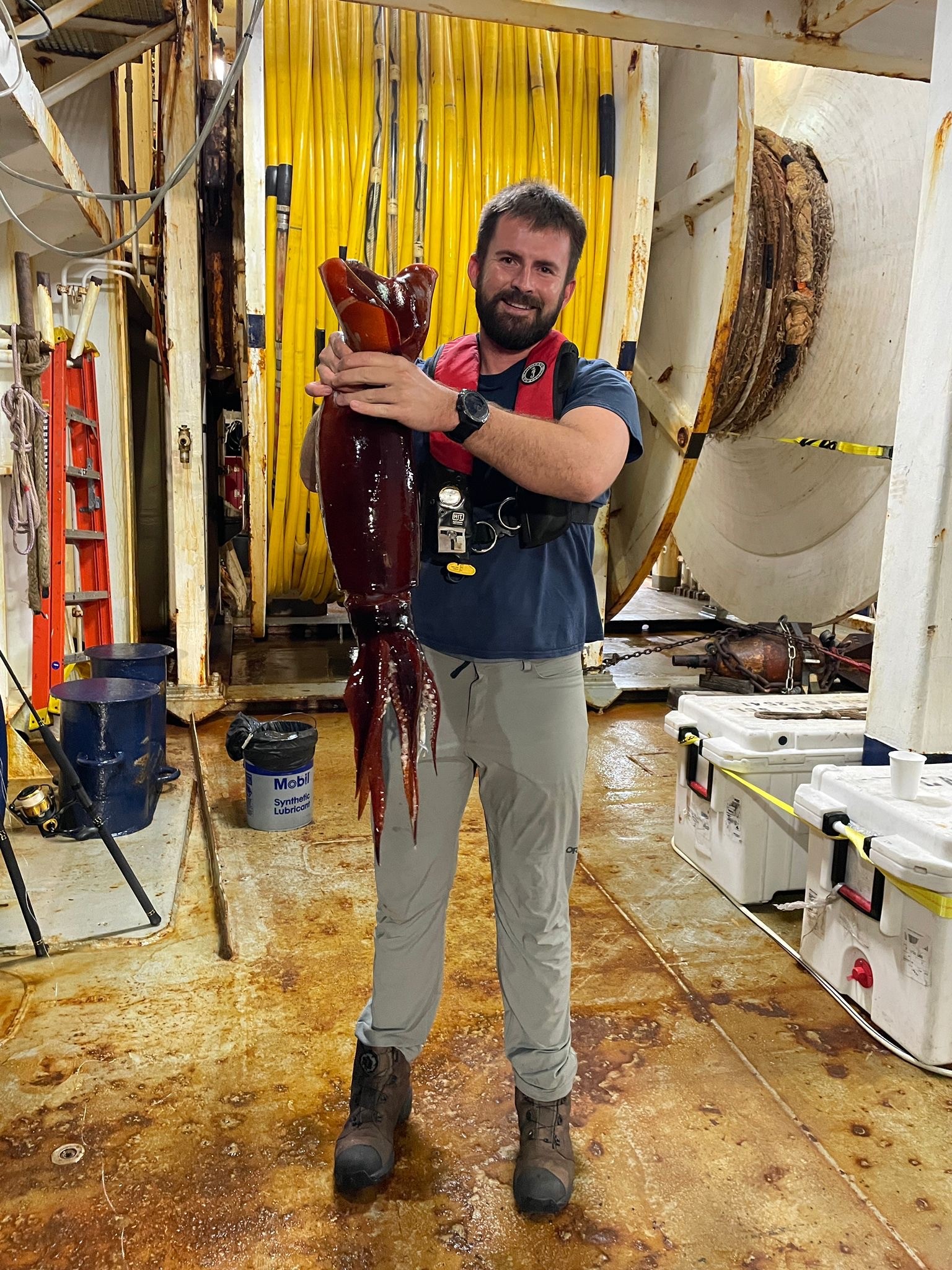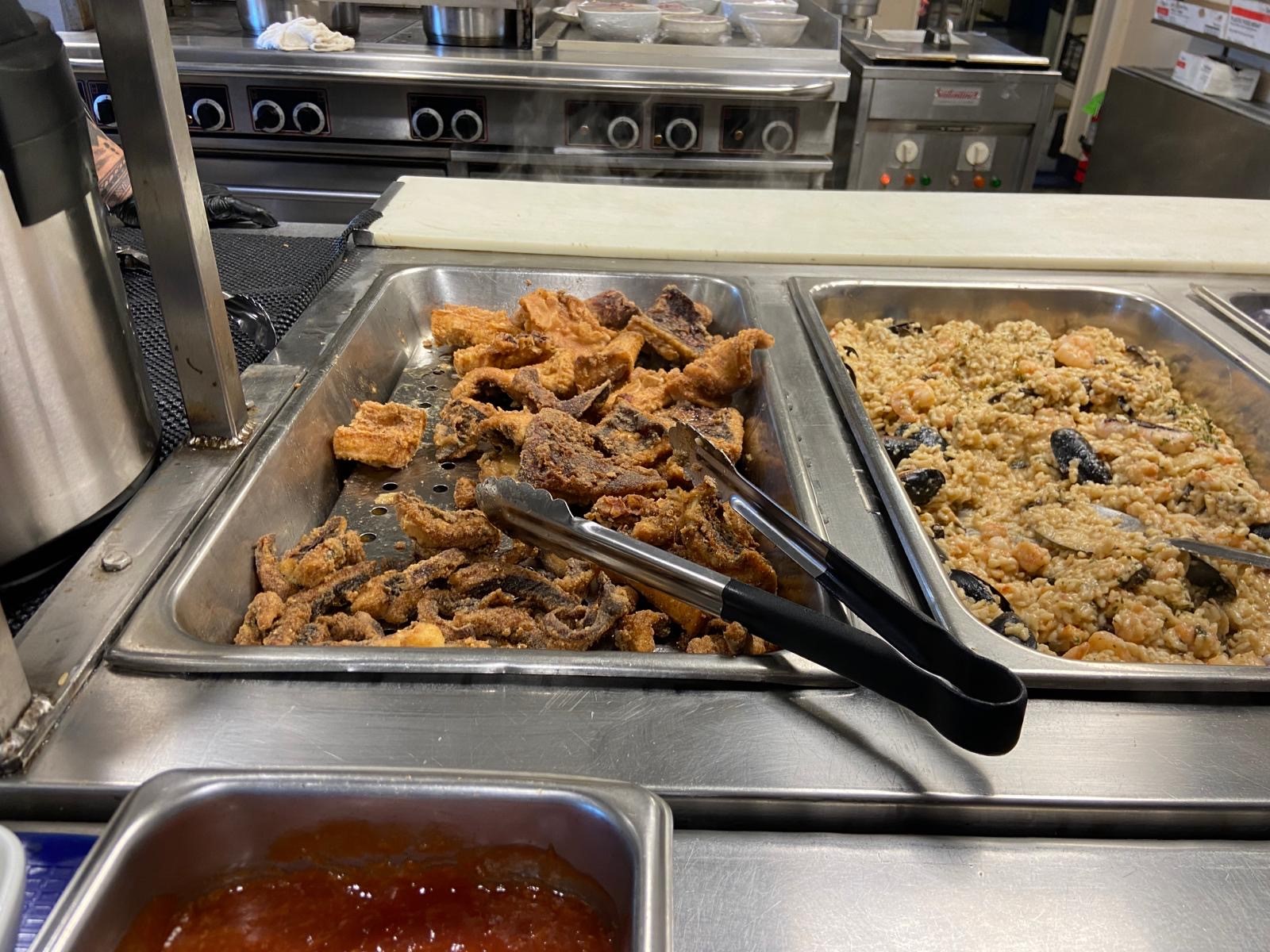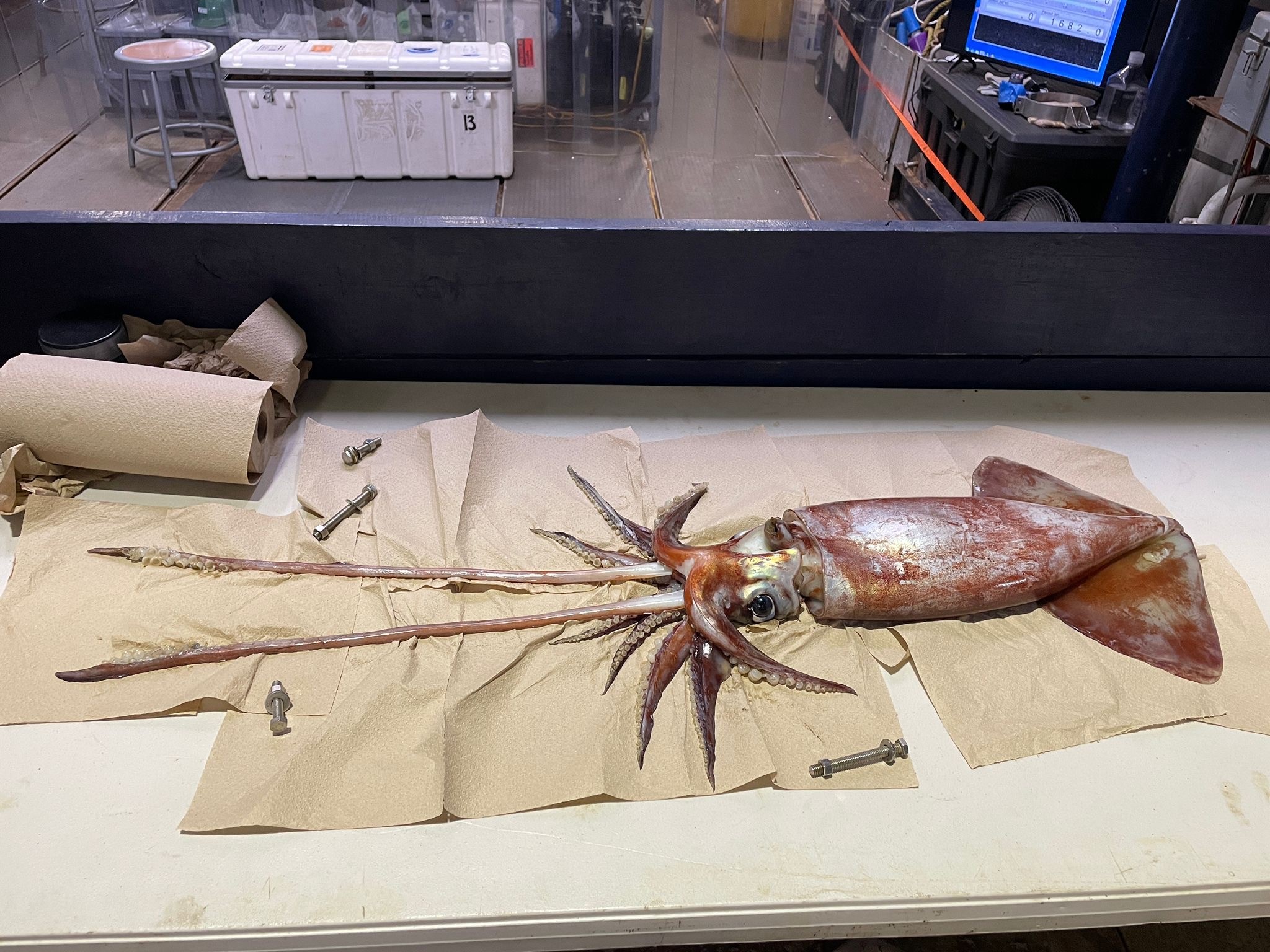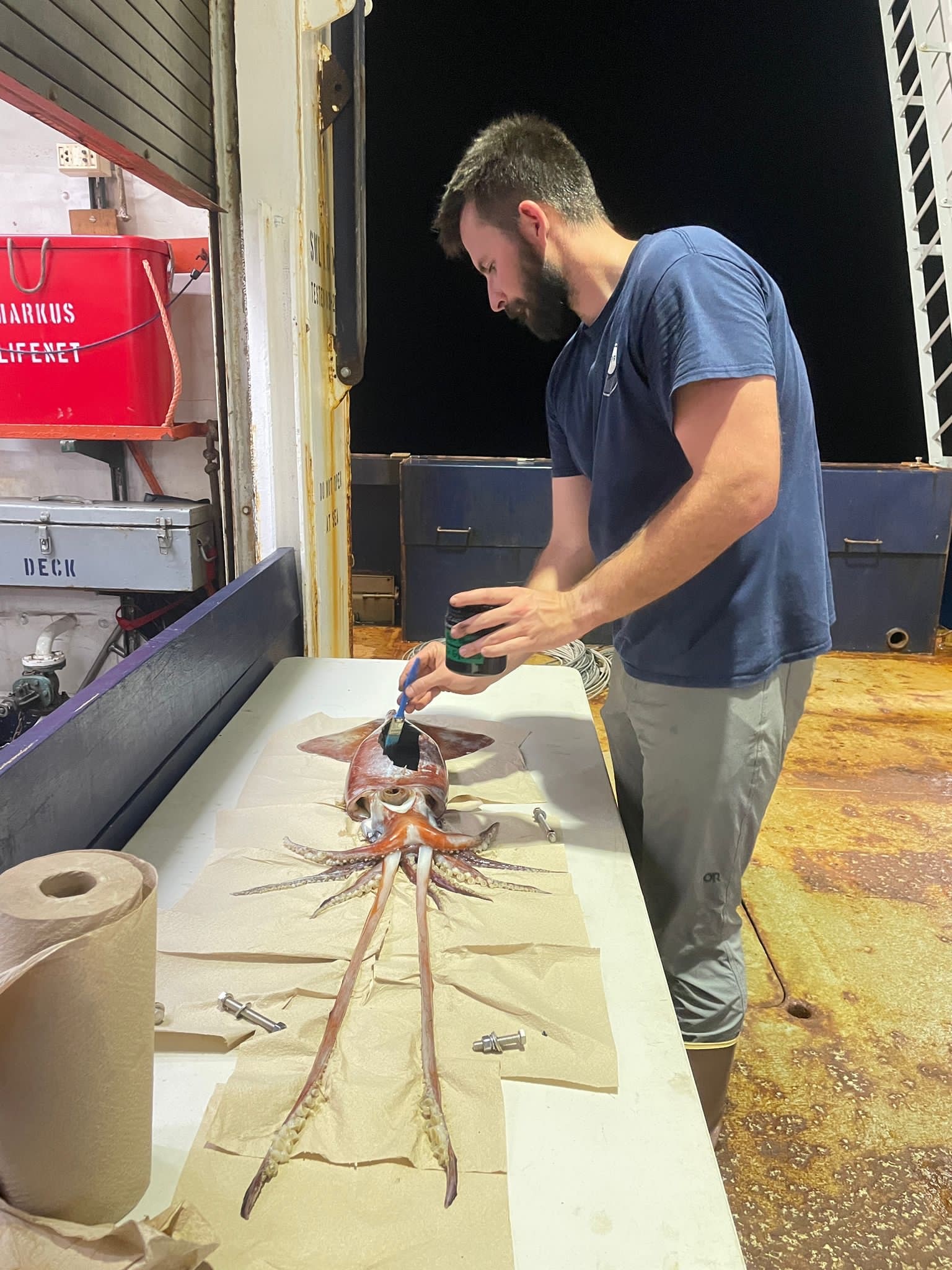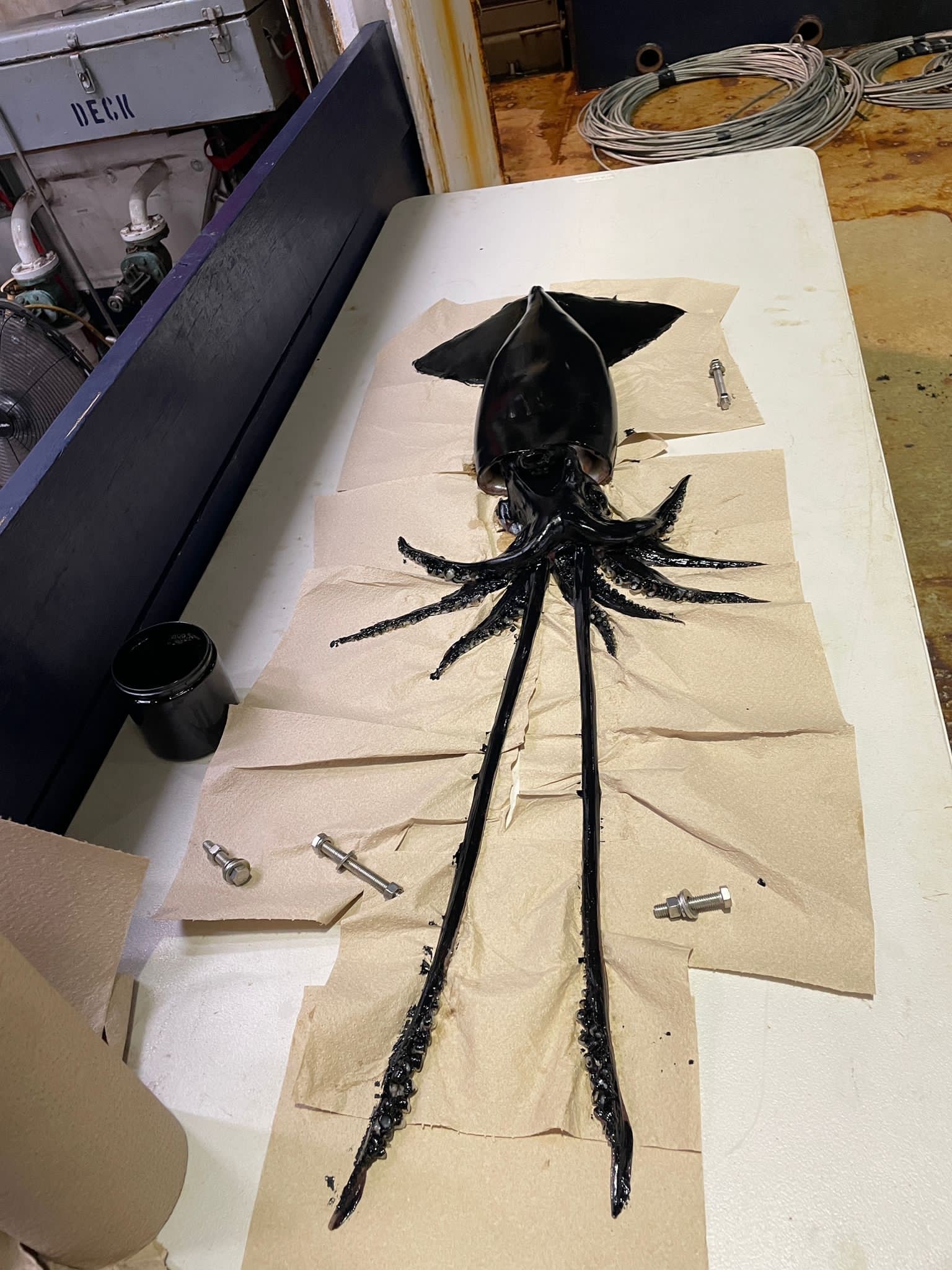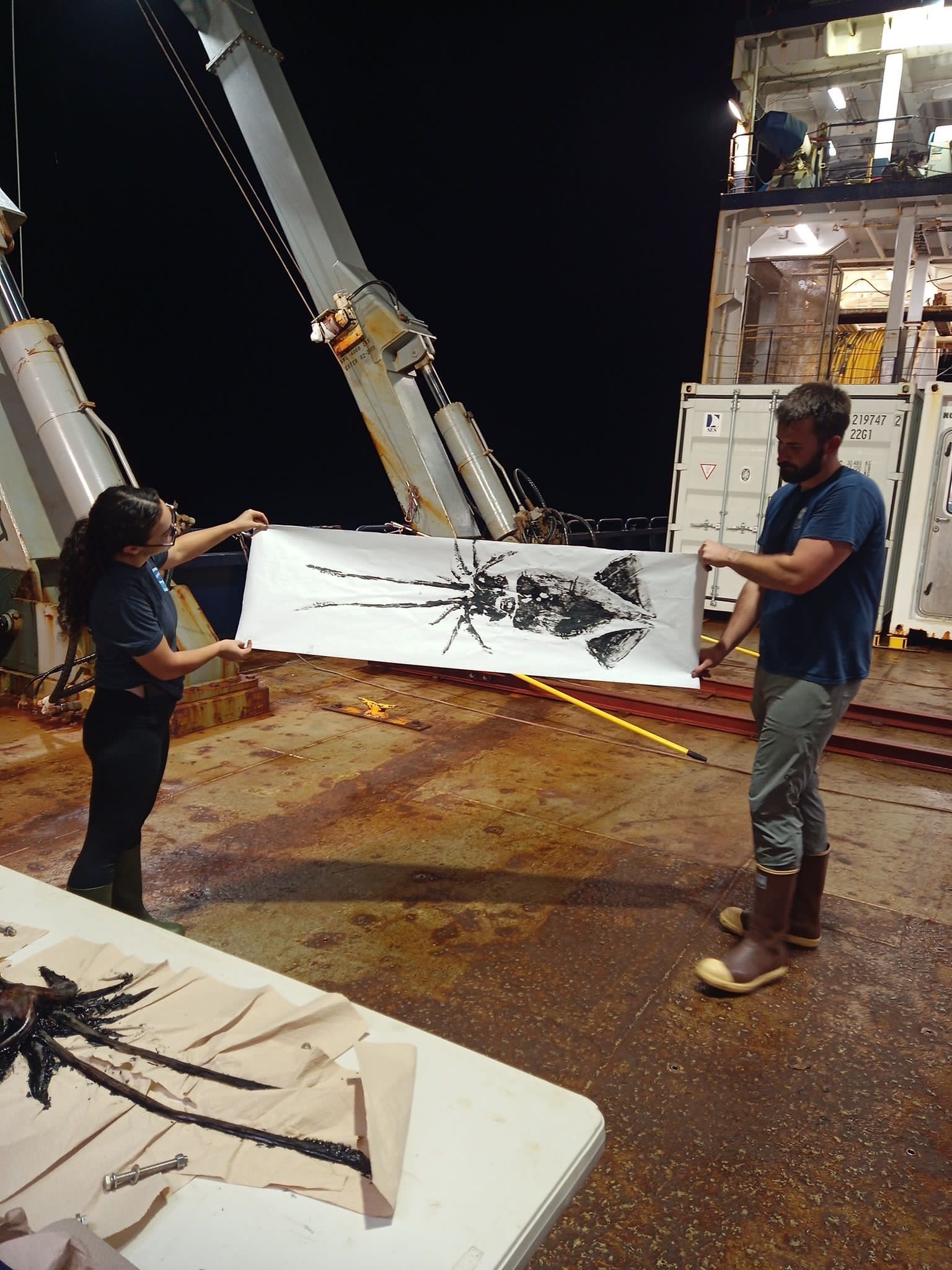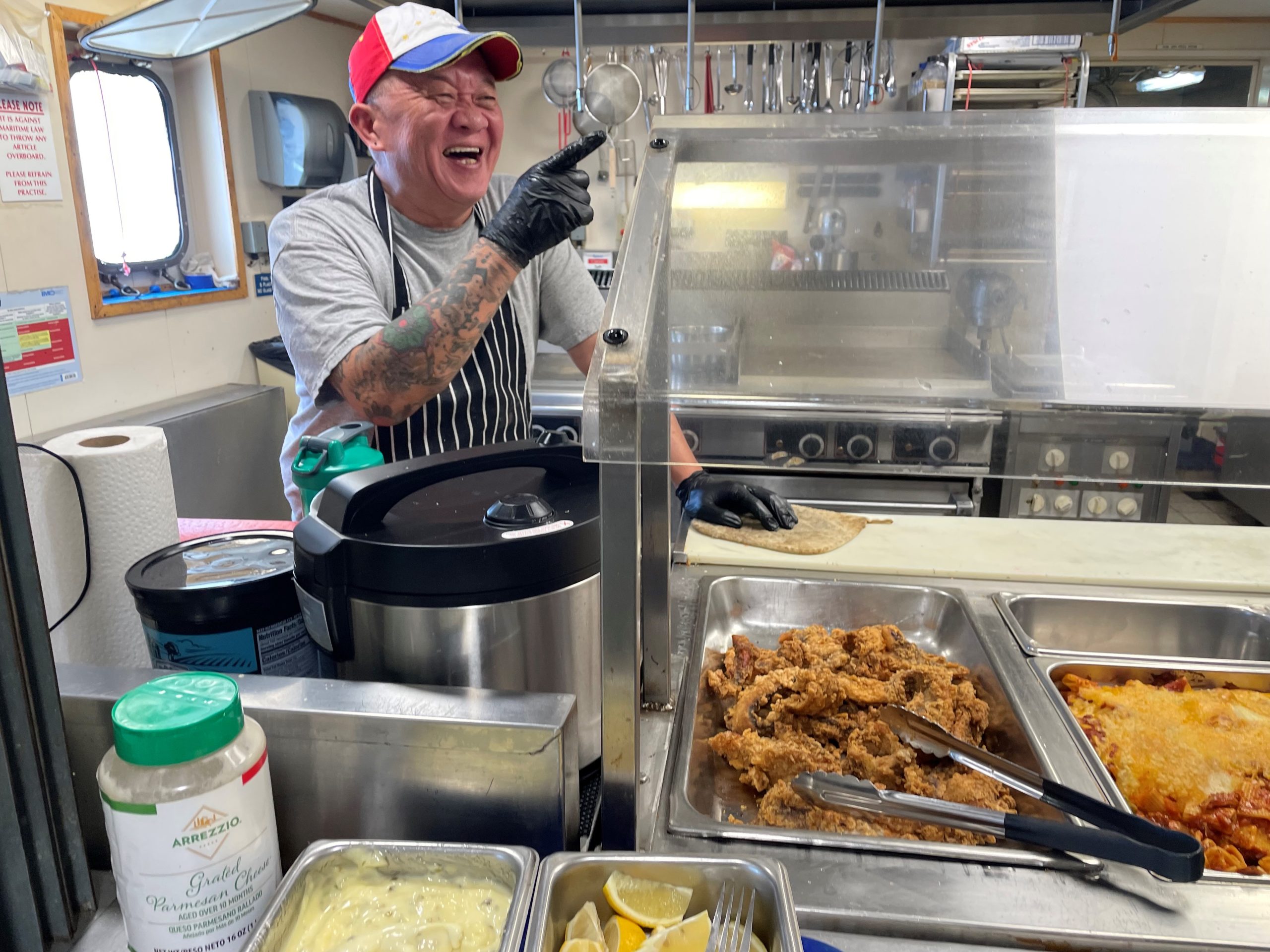Atlantic Squid
25 February 2024
Have you ever seen a squid up close? Atlantic squid are abundant along the eastern coast of North America, Europe, and Africa. They are characterized by their streamlined, torpedo-shaped bodies and elongated tentacles, equipped with suckers lined with sharp teeth-like structures that enable them to capture and subdue their prey. With a jet propulsion system that moves them quickly through the water, these incredible creatures are adept at navigating their environment, and they have the remarkable ability to change their color and texture to blend in with their surroundings. They use bioluminescence as a form of communication and defense, which provides a beautiful light show at night when they swim up from deeper waters to shallower depths to feed. The science team on the night shift on board the Langseth have the daily opportunity to see Atlantic squid! And, while they wait for the CTD casts to surface, they often try their luck at fishing for mahi mahi, tuna, and yes, Atlantic squid!
The science team’s “catch of the day” is always a treat for all of us! Back in the galley, Chef Jun, featured on the top of this page, wastes no time in transforming their freshly caught seafood into delectable feasts. Major “shout out” to Chef Jun! He is taking such good care of us!
And there’s more to this story! In addition to the fresh seafood we’ve been enjoying, Ian Smith and Rachel Cohn, both from UM CIMAS, shared a unique fusion of art and nature with us. Before Ian took the squid he caught to the galley to be prepared for our lunch, he and Rachel used the ancient Japanese artistic technique of fish printing, known as gyotaku (魚拓), to create a beautiful image of the squid. This tradition dates back to the mid-19th century when fishermen would coat their catch with ink and press it onto rice paper to document the size and type of fish they caught. Gyotaku has persisted as an art form today, with commercial, recreational, and educational facets.
First, they laid the squid out to position it for printing. After applying a layer of ink to the squid, they laid a sheet of paper over the top of the squid and gently pressed down on the paper to transfer the intricate details onto their canvas. Afterward, they carefully lifted the sheet off the top to reveal a beautiful, inked image of the squid.
For more information about ink printing, check out the Complete Guide to Fish Printing [Gyotaku Demonstrated] by Acorn Naturalist.
Blog post by: Teresa Kennedy, CTD Watchstander, UT Tyler/URI, and Rachel Cohn, research associate making O2 measurements, University of Miami Cooperative Institute for Marine and Atmospheric Sciences (CIMAS).

